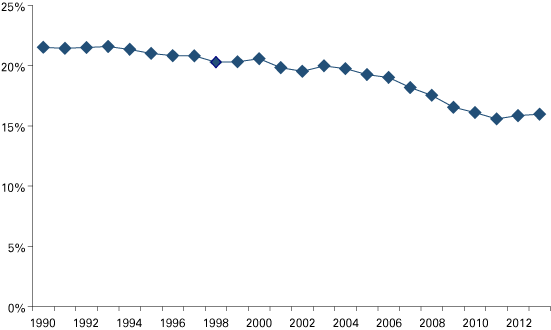Evansville Forecast 2014
Professor of Economics and Dean of Business, Romain College of Business, University of Southern Indiana
By the end of 2010, real output in the Evansville metropolitan area (metro) reached pre-Great Recession (December 2007 to June 2009) levels. However, six years after the onset of the recession, the Evansville economy remains about 1,000 jobs short of the employment level that prevailed in 2007. During 2013, signs of labor market improvement, increases in personal income and real retail sales, combined with the impact of recent fixed investment provide the basis for projecting that employment will reach pre-recession levels in 2014.
Once all the data are released for 2013, nominal personal income is estimated to have increased by 2.6 percent and real gross metro product is estimated to have increased by 0.5 percent. In 2014, Evansville metro area output is forecasted to increase by 2.1 percent, the number of jobs is projected to increase by 1,400 and the forecast for nominal personal income growth is 5.8 percent.
The unemployment rate in the Evansville metro fell from 8.4 percent in January 2013 to 6.9 percent in August. Nationally, the unemployment rate fell from 8.5 percent to 7.3 percent over the same time period. Job gains occurred in the following sectors: professional and business services, education and health services, and trade. Industries experiencing job losses include construction, financial activities and information.
Mixed signals are evident in the housing market. Homeowners experienced home price appreciation as existing home prices increased from an average of $96,200 in 2012 to $102,500 by the end of the second quarter in 2013. However, mortgage originations are expected to decrease from $1,182 million in 2012 to $933 million in 2013. Between 2012 and 2013, single-family housing permits are estimated to have increased by 28 percent while personal bankruptcies per 1,000 persons are estimated to have decreased from 5.0 to 4.1.
The manufacturing sector continues to be an important base to metro area household incomes and consumer spending activity even as the economy adjusts to an ongoing diversification away from manufacturing industry dependence (see Figure 1).
Figure 1: Evansville MSA Manufacturing Employment as Percent of Total Nonfarm Employment, 1990 to August 2013

Source: STATS Indiana, using Bureau of Labor Statistics data
As one of the most manufacturing-dependent metro areas in the nation, the Evansville economy was noticeably impacted by the Great Recession. Since 2007, Evansville’s manufacturing workforce has fallen by 12.7 percent (about 4,100 workers) compared to an 11.2 percent reduction in Indiana’s manufacturing workforce over the same period. In 2013, manufacturing earnings continued to be a significant driver of economic activity, accounting for about 24.2 percent of total earnings in the Evansville economy.
Given the proportion of the metro area’s output that is sold outside the metro, the strength of recovery in the Evansville area is linked to the strength of the broader economy. As the projected demand for locally produced goods reverts to its pre-recession level, personal income and output growth are expected to increase in 2014.
While output and employment growth are projected in 2014, the Evansville economy faces an ongoing challenge as a result of long-term adjustments occurring within the manufacturing sector, particularly in the share of nondurable manufacturing. Table 1 shows manufacturing as a percent of total employment for the metro, state and nation.
Table 1: Manufacturing Percent of Total Employment, August 2013
| Industry | Evansville Metro | Indiana | U.S. |
|---|---|---|---|
| Manufacturing | 16.0% | 16.7% | 8.8% |
| Durable Goods | 53.0% | 72.0% | 62.7% |
| Nondurable Goods | 47.0% | 28.0% | 37.3% |
Source: STATS Indiana, using Bureau of Labor Statistics and Indiana Department of Workforce Development data
In addition to the changing dynamics of the manufacturing industry, relatively slow growth in population, income and employment over the past three decades and a rapid change in the pace of technology adoption highlight the importance of achieving higher rates of output and employment growth. The completion of I–69 between Evansville and Bloomington in 2014 will improve Evansville’s economic activity: undoubtedly, the additional transportation and distribution networks will provide considerable opportunities for future employment and output growth.




